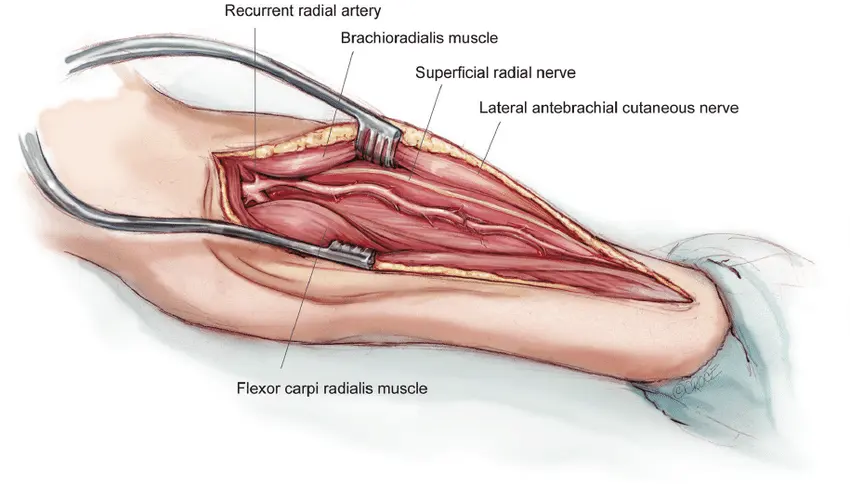Radial Arteries in Cardiac Surgery
The radial artery, a major artery in the forearm, is increasingly utilized in cardiac surgery, primarily for coronary artery bypass grafting (CABG). This artery is known for its accessibility, robustness, and excellent long-term patency rates, making it a preferred alternative to the saphenous vein and sometimes even the internal mammary arteries.
Anatomy of the Radial Artery
The radial artery originates from the brachial artery and extends down the lateral aspect of the forearm to the wrist. It is one of the major arteries supplying blood to the forearm and hand. It runs along the radius bone's side, making it easily accessible for medical procedures such as blood draws and arterial cannulation.
Role in Cardiac Surgery
The radial artery is often harvested for use in CABG due to its size, handling characteristics, and resistance to atherosclerosis. Here are some specific considerations in its use:
- Harvesting Technique: The radial artery can be harvested using an open or endoscopic technique. Careful handling is essential to preserve the artery's internal elastic lamina and vasoactive properties.
- Advantages in CABG: When used as a graft in CABG, the radial artery offers improved patency rates and reduced risk of revascularization compared to vein grafts. Its muscular wall and elastic properties help it withstand the arterial pressure of the coronary system.
Advantages of Using the Radial Artery
- High Patency Rates: Studies have shown that radial artery grafts have higher patency rates than saphenous vein grafts, particularly in younger patients with fewer comorbidities.
- Versatility: The radial artery can be used in a variety of coronary configurations, making it versatile for different bypass needs.
- Recovery and Complications: The use of the radial artery for grafting generally has a low complication rate. However, careful patient selection is necessary to minimize the risk of hand ischemia, especially in patients with inadequate ulnar circulation.
Conclusion
The use of the radial artery in cardiac surgery has become a preferred technique due to its clinical and physiological benefits. With advancements in surgical methods and postoperative care, the radial artery continues to provide excellent outcomes for patients undergoing CABG.

